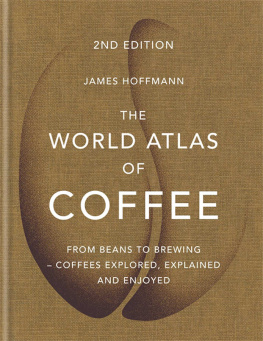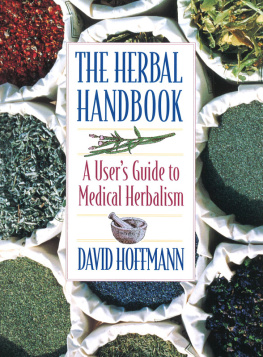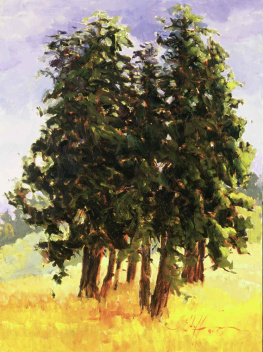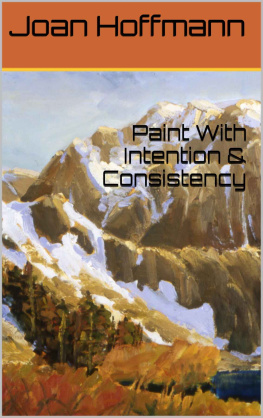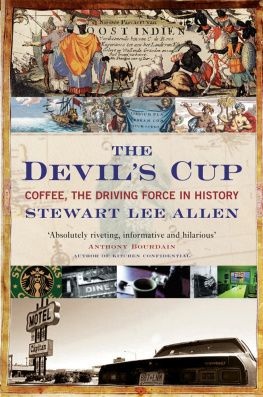Hoffmann - The world atlas of coffee : from beans to brewing - coffees explored, explained and enjoyed 2nd ed.
Here you can read online Hoffmann - The world atlas of coffee : from beans to brewing - coffees explored, explained and enjoyed 2nd ed. full text of the book (entire story) in english for free. Download pdf and epub, get meaning, cover and reviews about this ebook. year: 2018, publisher: Mitchell Beazley, genre: Romance novel. Description of the work, (preface) as well as reviews are available. Best literature library LitArk.com created for fans of good reading and offers a wide selection of genres:
Romance novel
Science fiction
Adventure
Detective
Science
History
Home and family
Prose
Art
Politics
Computer
Non-fiction
Religion
Business
Children
Humor
Choose a favorite category and find really read worthwhile books. Enjoy immersion in the world of imagination, feel the emotions of the characters or learn something new for yourself, make an fascinating discovery.
- Book:The world atlas of coffee : from beans to brewing - coffees explored, explained and enjoyed 2nd ed.
- Author:
- Publisher:Mitchell Beazley
- Genre:
- Year:2018
- Rating:4 / 5
- Favourites:Add to favourites
- Your mark:
- 80
- 1
- 2
- 3
- 4
- 5
The world atlas of coffee : from beans to brewing - coffees explored, explained and enjoyed 2nd ed.: summary, description and annotation
We offer to read an annotation, description, summary or preface (depends on what the author of the book "The world atlas of coffee : from beans to brewing - coffees explored, explained and enjoyed 2nd ed." wrote himself). If you haven't found the necessary information about the book — write in the comments, we will try to find it.
The world atlas of coffee : from beans to brewing - coffees explored, explained and enjoyed 2nd ed. — read online for free the complete book (whole text) full work
Below is the text of the book, divided by pages. System saving the place of the last page read, allows you to conveniently read the book "The world atlas of coffee : from beans to brewing - coffees explored, explained and enjoyed 2nd ed." online for free, without having to search again every time where you left off. Put a bookmark, and you can go to the page where you finished reading at any time.
Font size:
Interval:
Bookmark:



Coffee has never been better than it is today. Producers know more than ever before about growing coffee and have access to more varieties and specialist growing techniques. Coffee roasters have never before been so likely to appreciate the importance of using freshly harvested coffee beans, and their understanding of the roasting process continues to improve. There are now more and more cafs selling really good coffee, using the best equipment and training their staff more effectively. I wrote these words in the introduction to the first edition of this book and they are still true today.
The world of great coffee has now truly gone mainstream. Every major city in the world has a plethora of cafs and coffee businesses, all run by passionate people working hard to share something exciting and delightful about coffee.
The coffee industry is enormous and has spread around the world. Today, 125 million people depend on coffee production for their livelihood, and coffee is consumed in every part of the globe. Coffee is entwined with both the economic and cultural histories of so many countries yet very few coffee drinkers have, in the past, scratched the surface to see what is underneath. Yet while many people may not have explored the world of coffee, a large portion of coffee drinkers are seeking out coffee that has been sourced carefully, sold traceably, and brewed with skill and care.
The coffee industry can be separated into two distinct areas: commodity and speciality. In this book we will primarily be dealing with speciality coffees. These are coffees that are defined by their quality and by how good they taste. Their origin is important, as this will often determine their flavour. Commodity coffee is the term used to describe coffees that are not traded on their quality, but are considered simply to be coffee. Where they are grown doesnt matter much, nor when they were harvested or how they were processed. Commodity coffee has defined the way that much of the world thinks about coffee a generic product from somewhere tropical; an efficient, if bitter, way to get caffeine into the bloodstream and to clear the mind in the morning. The idea that one might drink coffee for pleasure, to delight in its complexity of flavour, still has relatively little penetration into global culture. There are many differences between the production and international trade of speciality coffees and commodity coffees as they are quite different products.
While this new world of coffee has boomed, it can still be a little intimidating. The language of coffee is foreign to most people, and many cafs are eager to share the story of the coffee they brew: its variety, its post-harvest processing or the people behind it. This can be overwhelming or frustrating. This book is written to make sense of that language, to give context to the stories of the cups of coffee you drink, to highlight what makes each farm or cooperative different and interesting.
At first, the sheer diversity of coffees and the huge volume of information available can be off-putting. However, once you start to understand a little about coffee, the diversity and information are the very things that make it so compelling. I hope this book serves you well, and brings a little more pleasure to every cup of coffee you drink.

During the 19th century, coffee houses in India became popular and often raucous meeting places for English gentlemen to socialize, do business, discuss the news and to gossip.

When talking about coffee, people are usually referring to the fruit from one particular species of tree: Coffea arabica. Arabica makes up most of the coffee produced each year, and it is grown in dozens of countries between the Tropic of Capricorn and the Tropic of Cancer. It isnt the only species of coffee, however. In fact, over 120 different species have been identified to date but only one other is grown in any quantity and this is Coffea canephora, a plant we commonly refer to as Robusta.
R obusta is actually something of a brand name given to the species, chosen to highlight its attributes. It was discovered in the Belgian Congo (what is now the Democratic Republic of the Congo) in the late-19th century and its commercial potential was clear. It was able to grow and fruit at lower altitudes than the existing Arabica plants, in higher temperatures, and was more resistant to disease. These attributes are what still drive much of the production of Robusta today, and because of the way it is grown it is substantially cheaper to produce. There is an inevitable downside, however: it doesnt taste very good.
Some people will make a rather specious argument that a really well-produced Robusta coffee can taste better than a poor Arabica coffee and this may be true, but it does nothing to convince us that Robusta actually tastes good. It is generally difficult to ascribe particular tastes to coffees, but I think it would be fair to say that Robusta has a woody, burnt-rubber quality in the cup. It usually has very little acidity, but will have a heavy body and . There are, of course, grades of quality within Robusta, and it is possible to produce higher-quality Robustas. It has been a staple of the Italian espresso culture for many years, but currently most of the Robusta produced around the world ends up in large manufacturing plants destined to become the pariah of our industry: instant soluble coffee.
For the soluble coffee industry, price is far more important than flavour, and the global reliance on coffee as a fast-food product means that Robusta makes up around 40 per cent of the worlds coffee produced each year. This percentage is somewhat variable, driven by fluctuations in price and demand. For example, an increase in the global price of coffee may result in more Robusta production, as large multinational coffee companies may need to find cheaper alternatives to Arabica. Interestingly, in the past when roasters have substituted Robusta coffees for Arabica in big commercial blends, there has been a downward trend in coffee consumption. This might be related to flavour, or to the fact that Robusta has about twice the caffeine content of Arabica. Either way, when big brands cut corners, consumers notice or at least change their coffee-drinking habits.
The coffee industry treated Robusta like an ugly sister to Arabica until a rather interesting genetic discovery was made. Once scientists began sequencing the genes, it became clear that the two species are not cousins or siblings. Instead it appears that Robusta is, in fact, a parent of Arabica. Most likely somewhere in southern Sudan, Robusta crossed with another species called
Next pageFont size:
Interval:
Bookmark:
Similar books «The world atlas of coffee : from beans to brewing - coffees explored, explained and enjoyed 2nd ed.»
Look at similar books to The world atlas of coffee : from beans to brewing - coffees explored, explained and enjoyed 2nd ed.. We have selected literature similar in name and meaning in the hope of providing readers with more options to find new, interesting, not yet read works.
Discussion, reviews of the book The world atlas of coffee : from beans to brewing - coffees explored, explained and enjoyed 2nd ed. and just readers' own opinions. Leave your comments, write what you think about the work, its meaning or the main characters. Specify what exactly you liked and what you didn't like, and why you think so.

